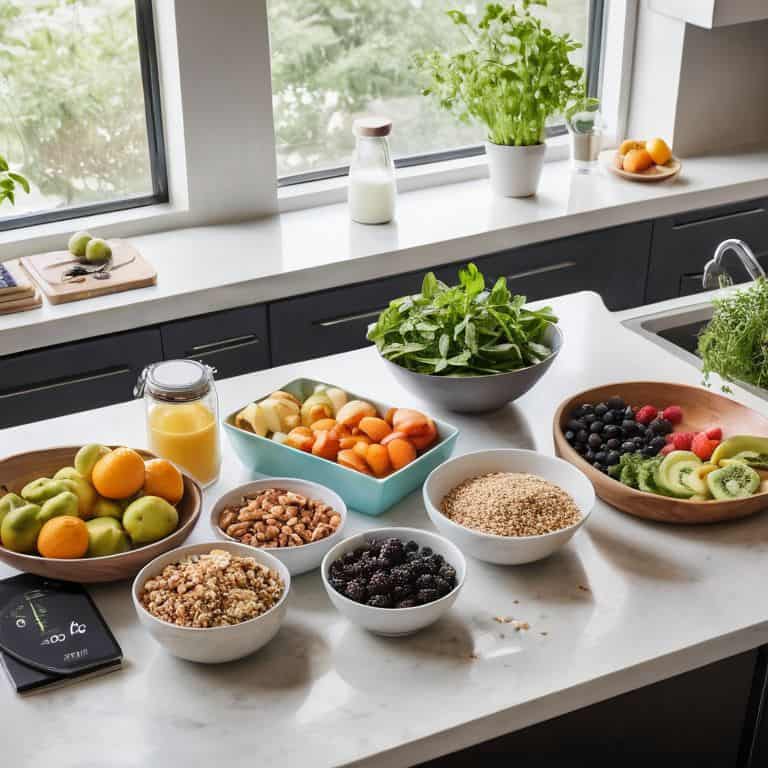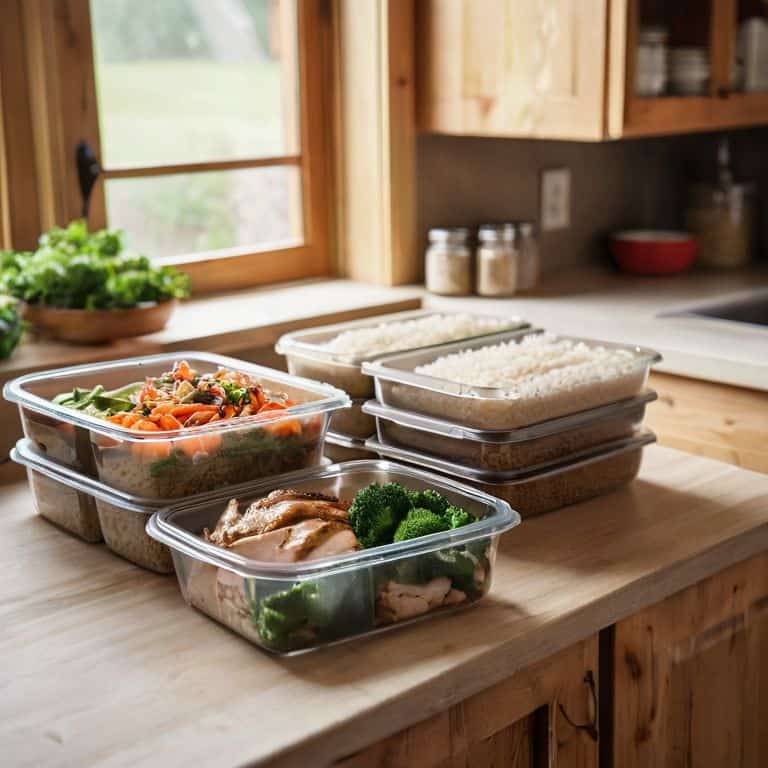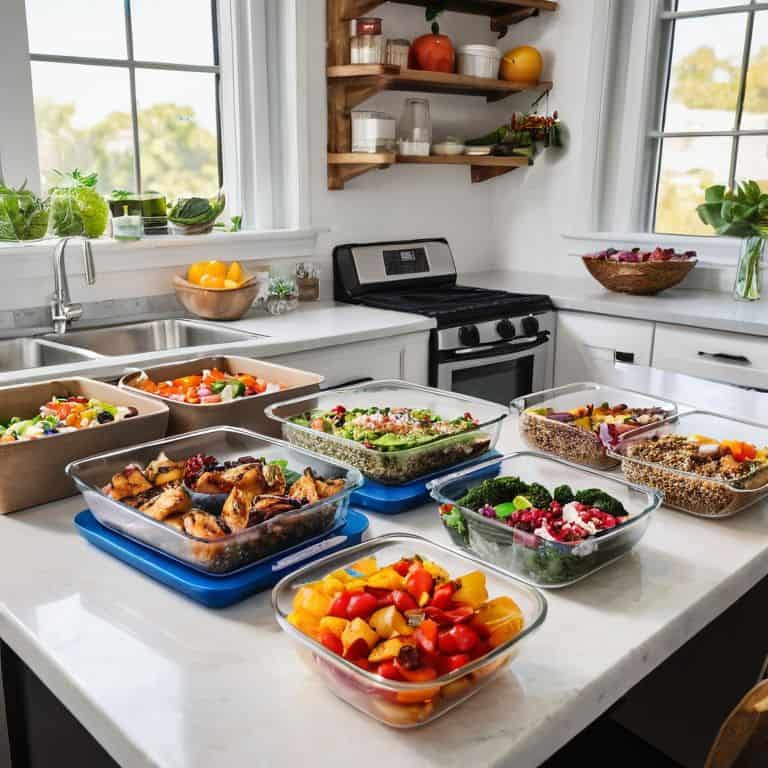As a former bush pilot, I’ve learned that a guide to meal prep is not just about cooking; it’s about navigation – charting a course through the chaos of daily life to reach your destination: a healthier, more balanced you. I recall a particularly challenging flight, where a sudden storm forced me to rely on my emergency rations. The experience taught me the value of preparation and having a solid plan in place. Similarly, when it comes to meal prep, many of us get caught up in the idea that it’s only for fitness enthusiasts or extreme dieters, but the truth is, it’s for anyone looking to take control of their diet and make a positive impact on their overall well-being.
In this article, I’ll share my personal approach to meal prep, one that’s grounded in simplicity and practicality. You’ll learn how to create a personalized plan that fits your lifestyle, without sacrificing flavor or flexibility. We’ll cover the essentials, from setting clear goals to building a pantry that supports your nutritional needs. My goal is to provide you with a clear, step-by-step guide that will help you navigate the world of meal prep with confidence, and make healthy eating a sustainable part of your daily routine.
Table of Contents
Guide Overview: What You'll Need

Total Time: 1 hour 30 minutes
Estimated Cost: $20 – $50
Difficulty Level: Easy
Tools Required
- Large Containers for storing meals
- Cutting Board for food preparation
- Chef Knife for chopping ingredients
- Measuring Cups for accurate measurements
Supplies & Materials
- Fresh Produce fruits and vegetables
- Proteins chicken, fish, tofu, etc.
- Grains rice, quinoa, brown rice, etc.
- Spices and Herbs for added flavor
Step-by-Step Instructions
- 1. First, let’s start by planning our route, which in this case is our meal prep plan for the week. Take some time to think about your dietary goals, preferences, and schedule. Consider what meals you want to prep, how many portions you need, and what ingredients you already have in your pantry. I like to use a simple checklist to keep track of my plan, just like I do before a flight.
- 2. Next, we need to gather our supplies, including containers, utensils, and of course, ingredients. Make sure you have a variety of containers in different sizes to accommodate different types of meals. I recommend using reusable containers to reduce waste and make your meal prep more sustainable. As a former bush pilot, I’ve learned to appreciate the importance of being prepared and having the right gear.
- 3. Now it’s time to create our flight plan, or in this case, our meal prep schedule. Decide which days you want to prep your meals and how much time you have available. Consider batch cooking certain ingredients, like rice or roasted vegetables, to save time and reduce food waste. I like to use a simple calendar to keep track of my meal prep schedule, just like I do when planning a flight.
- 4. With our plan in place, it’s time to start prepping our ingredients. Begin by washing and chopping your vegetables, marinating your proteins, and cooking your grains. I recommend using a mis en place approach, where you prepare all your ingredients before starting to cook. This will help you stay organized and ensure that your meals turn out as planned.
- 5. Once our ingredients are prepped, it’s time to assemble our meals. Start by portioning out your ingredients into individual containers, then add any final touches, like sauces or seasonings. I like to use a layering technique, where I add each ingredient in a specific order to ensure that my meals look and taste great.
- 6. Now that our meals are assembled, it’s time to store them safely. Make sure to label each container with the date, meal name, and any reheating instructions. I recommend using airtight containers to keep your meals fresh and prevent contamination. As a flight instructor, I always emphasize the importance of safety, and this is no exception.
- 7. Finally, let’s review our checklist to make sure we haven’t forgotten anything. Double-check that you have all the ingredients you need, that your meals are properly stored, and that you have a plan in place for reheating and consuming your meals throughout the week. I like to use a simple pre-flight checklist to ensure that I’ve covered all my bases, and I recommend you do the same for your meal prep.
A Guide to Meal Prep

As we navigate the world of meal prep, it’s essential to consider meal prep for beginners. This approach involves starting small and gradually increasing the number of meals prepared in advance. By doing so, we can avoid feeling overwhelmed and develop a routine that works for us. I like to think of it as plotting a course for a long-haul flight – we need to ensure we have enough fuel, or in this case, nutritious food, to sustain us throughout the journey.
When it comes to healthy meal prep ideas, the options are endless. From batch cooking to using meal prep containers, we can find a system that suits our lifestyle. I recommend exploring different recipes and techniques to keep things interesting and prevent boredom. Just as a pilot needs to stay alert and focused during a flight, we need to stay engaged and motivated with our meal prep routine.
To make meal prep more efficient, consider implementing a weekly meal prep schedule. This can help us plan and organize our meals in advance, ensuring we stay on track and avoid last-minute takeouts or unhealthy snacks. By being intentional with our meal prep, we can save time, money, and reduce food waste – much like a pilot uses checklists to ensure a safe and successful flight.
Navigating Healthy Meal Prep Ideas
As we explore the world of meal prep, it’s essential to navigate through the numerous healthy ideas available. Just like plotting a flight plan, we need to consider our destination – in this case, our dietary goals. I recommend starting with simple, tried-and-true recipes and gradually experimenting with new flavors and ingredients. This approach will help you build a solid foundation and avoid feeling overwhelmed.
By doing so, you’ll be able to create a personalized meal prep plan that suits your lifestyle and preferences. Think of it as filing a flight plan – you need to know your departure point, route, and destination to ensure a smooth journey. In meal prep, your “departure point” is your current diet, your “route” is the transition to healthier habits, and your “destination” is achieving your nutritional goals.
Plotting Meal Prep for Beginners
As a flight instructor, I always emphasize the importance of pre-flight planning, and meal prep is no exception. For beginners, plotting a meal prep course can seem daunting, but it’s actually quite straightforward. Start by identifying your dietary goals and constraints, just as you would file a flight plan. Consider your ingredients and equipment as your aircraft’s cargo and fuel – you need to know what you’re working with to navigate successfully.
Think of your meal prep plan as a simple checklist: what meals do you want to prepare, how many servings, and what’s the cooking method? Break it down into manageable steps, just as you would with a pre-flight checklist. This will help you stay organized and ensure a smooth execution of your meal prep flight plan.
Clearing the Runway: 5 Essential Meal Prep Tips
- Plan Your Flight Plan: Create a weekly meal calendar to ensure you’re prepared for the week ahead
- Check Your Instruments: Invest in quality containers and utensils to make meal prep efficient and safe
- Navigate Nutrition: Focus on balanced meals that include a variety of fruits, vegetables, whole grains, and lean proteins
- Fuel for the Journey: Prep healthy snacks to avoid relying on convenient but unhealthy options
- File Your Flight Plan: Keep track of your meal prep progress and adjust your strategy as needed to stay on course
Key Takeaways from Our Meal Prep Flight Plan
Always start with a clear mission: define your dietary goals and preferences to navigate the meal prep process effectively, just as a pilot files a flight plan before takeoff
Master the pre-flight checklist: gather all necessary ingredients, tools, and storage containers before beginning meal prep to ensure a smooth and efficient process, minimizing turbulence along the way
Stay on course with flexibility: be prepared to adjust your meal prep plan as needed, just as a pilot adapts to changing weather conditions, to maintain a healthy and enjoyable relationship with food
Charting the Course to Nutritional Success
Just as a steady flight plan guides us through turbulent skies, a well-planned meal prep strategy can navigate us through life’s busy moments, ensuring we stay on course with our health and wellness goals.
Daniel Sato
Staying on Course with Meal Prep

As we conclude our journey through the world of meal prep, let’s take a moment to review the fundamentals. We’ve covered the essential steps to get started, from planning your meals to executing your prep sessions. We’ve also navigated through a variety of healthy meal prep ideas, emphasizing the importance of balance and variety in your diet. By following these guidelines and staying committed, you’ll be well on your way to developing a sustainable meal prep routine that suits your lifestyle and preferences.
As you move forward, remember that meal prep is not just about preparing meals, but about investing in your well-being. It’s about taking control of your nutrition, saving time, and reducing stress. So, let’s stay on course and make meal prep a lasting habit, one that brings us closer to our health and wellness goals. With patience, persistence, and practice, you’ll find that meal prep becomes an integral part of your daily routine, helping you soar to new heights in your journey towards a healthier, happier you.
Frequently Asked Questions
How do I determine the right meal prep portion sizes for my individual needs?
To determine the right meal prep portion sizes, think of it like filing a flight plan – you need to consider your destination, or in this case, your dietary goals. Assess your daily caloric needs, activity level, and nutritional requirements, then adjust your portion sizes accordingly, just as you would adjust your altitude to reach your target.
What are some tips for keeping meal prep containers fresh and organized?
Just like securing cargo in the cabin, we want to keep our meal prep containers fresh and organized. I recommend labeling each container with its contents and date, and storing them in a designated area, like a ‘galley’ in the kitchen. This keeps everything tidy and makes it easy to grab what you need, just like checking your pre-flight checklist.
Can I still do meal prep if I have dietary restrictions or preferences, such as vegan or gluten-free?
Absolutely, meal prep is still possible with dietary restrictions. As a flight instructor, I like to think of it as plotting an alternate route – you’ll just need to adjust your navigation. For vegan or gluten-free meal prep, focus on swapping ingredients and exploring new recipes that fit your needs, just like adjusting your flight plan for changing weather conditions.
